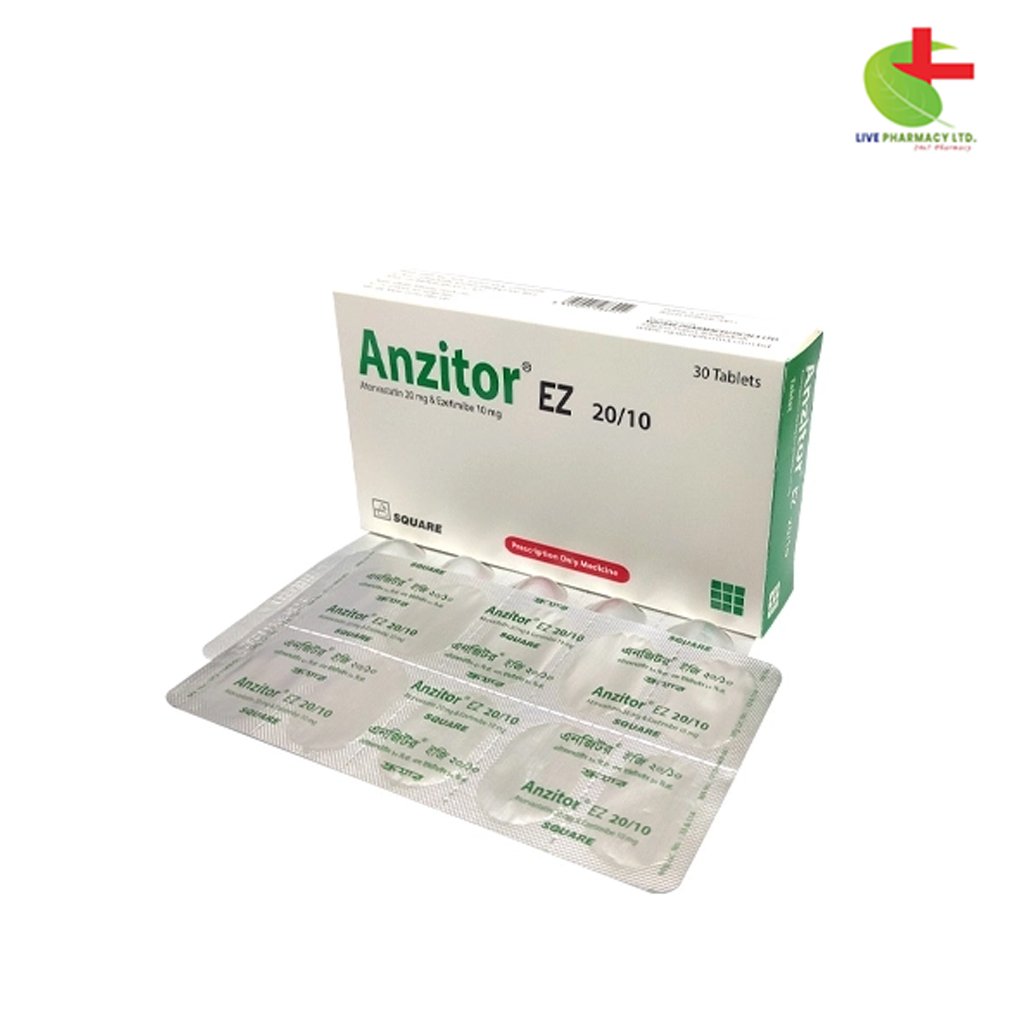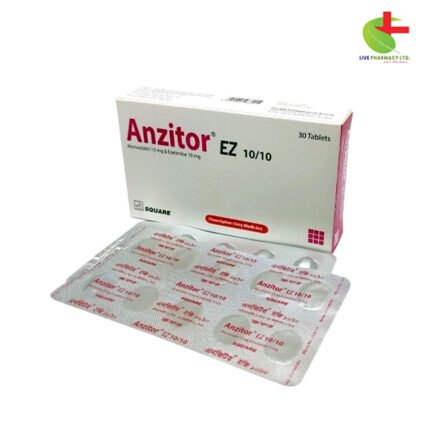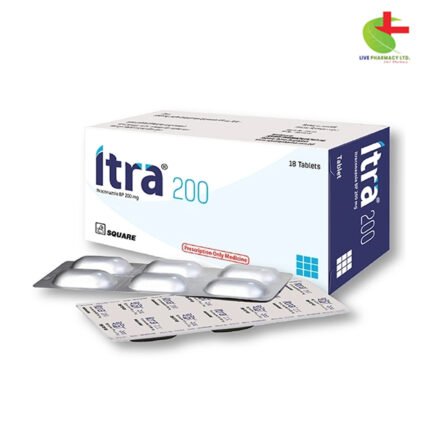Anzitor EZ 20/10
220.00৳ Strip
- Offers advanced lipid-altering medications for effective management of cholesterol levels.
- Products combine atorvastatin and ezetimibe to reduce total cholesterol, LDL-C, and triglycerides.
- Designed for individuals with primary hyperlipidemia or homozygous familial hypercholesterolemia.
- Detailed dosage guidelines ensure tailored treatment plans for optimal therapeutic benefits.
- Provides expert advice and comprehensive care in lipid management.
 Brand
Brand
|
Square Pharmaceuticals PLC |
|---|---|
 Generics
Generics
|
Atorvastatin + Ezetimibe |
 Type
Type
|
Tablet |
Indications
Treatment with lipid-altering agents should form part of a comprehensive strategy for individuals at high risk of atherosclerotic vascular disease due to hypercholesterolemia. Drug therapy is recommended alongside dietary changes when non-pharmacological interventions alone have not sufficiently reduced cholesterol levels.
Primary Hyperlipidemia
This medication is indicated for reducing elevated levels of total cholesterol (total-C), low-density lipoprotein cholesterol (LDL-C), apolipoprotein B (Apo B), triglycerides (TG), and non-high-density lipoprotein cholesterol (non-HDL-C). It also aims to increase high-density lipoprotein cholesterol (HDL-C) in patients with primary (both familial and non-familial) hyperlipidemia or mixed hyperlipidemia.
Homozygous Familial Hypercholesterolemia (HoFH)
For patients with homozygous familial hypercholesterolemia, this medication is prescribed to lower elevated total-C and LDL-C levels as an adjunct to other lipid-lowering therapies (e.g., LDL apheresis) or when such treatments are not available.
Pharmacology
- Atorvastatin: Lowers plasma cholesterol and lipoprotein levels by inhibiting HMG-CoA reductase and cholesterol synthesis in the liver. It also increases hepatic LDL receptors, enhancing LDL uptake and catabolism.
- Ezetimibe: Reduces blood cholesterol by blocking cholesterol absorption in the small intestine through inhibition of the sterol transporter, NPC1L1. This mechanism reduces hepatic cholesterol stores and increases cholesterol clearance from the blood, complementing the action of statins.
Dosage & Administration
The recommended daily dosage ranges from 10/10 mg to 80/20 mg. Initial dosing typically starts at 10/10 mg or 20/10 mg once daily, with adjustments based on lipid levels after 2 weeks or more.
Special Populations:
- Patients with Homozygous Familial Hypercholesterolemia: Higher initial doses of 40/10 mg daily are recommended.
- Patients with Hepatic Impairment: Contraindicated in those with active liver disease or unexplained persistent elevations in liver enzymes.
- Patients with Renal Impairment: No dosage adjustment necessary.
Interactions
Caution is advised when combining with certain medications (e.g., cyclosporine, gemfibrozil) due to increased risk of myopathy. Monitoring is recommended when coadministering with drugs affecting steroid hormones or oral contraceptives.
Contraindications
Avoid use in patients with active liver disease or hypersensitivity to any components of the medication.
Side Effects
Common side effects include rhabdomyolysis, myopathy, and liver enzyme abnormalities.
Pregnancy & Lactation
Contraindicated during pregnancy due to potential harm to the fetus. Not recommended during lactation.
Precautions & Warnings
Monitor liver enzymes prior to and during treatment. Discontinue therapy if serious liver injury occurs. Use caution with medications affecting endogenous steroid hormones.
Use in Special Populations
Safety and effectiveness in pediatric patients have not been established. No dosage adjustment is needed for geriatric patients.
Overdose Effects
Symptomatic treatment and supportive measures are recommended in case of overdose.
Therapeutic Class
Belongs to the class of other lipid-regulating drugs.
Storage Conditions
Store below 30°C in a dry place, protected from light, and out of reach of children.













Reviews
There are no reviews yet.